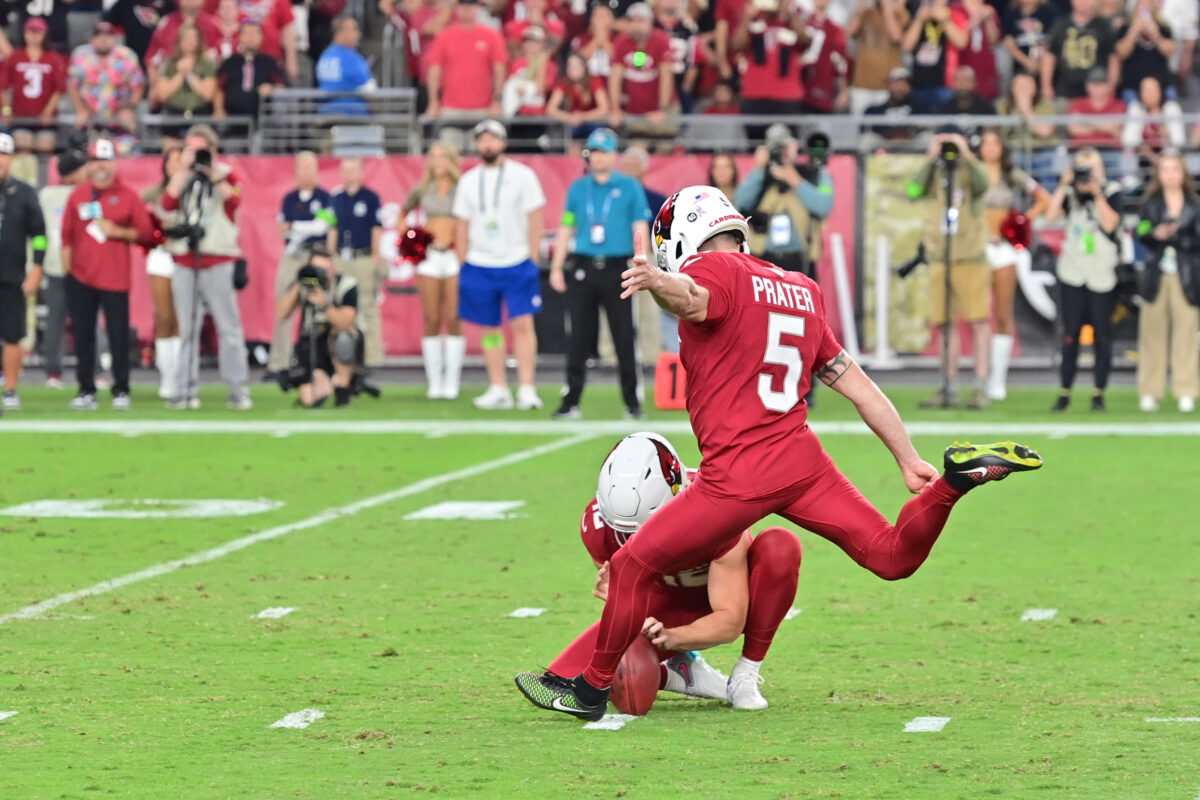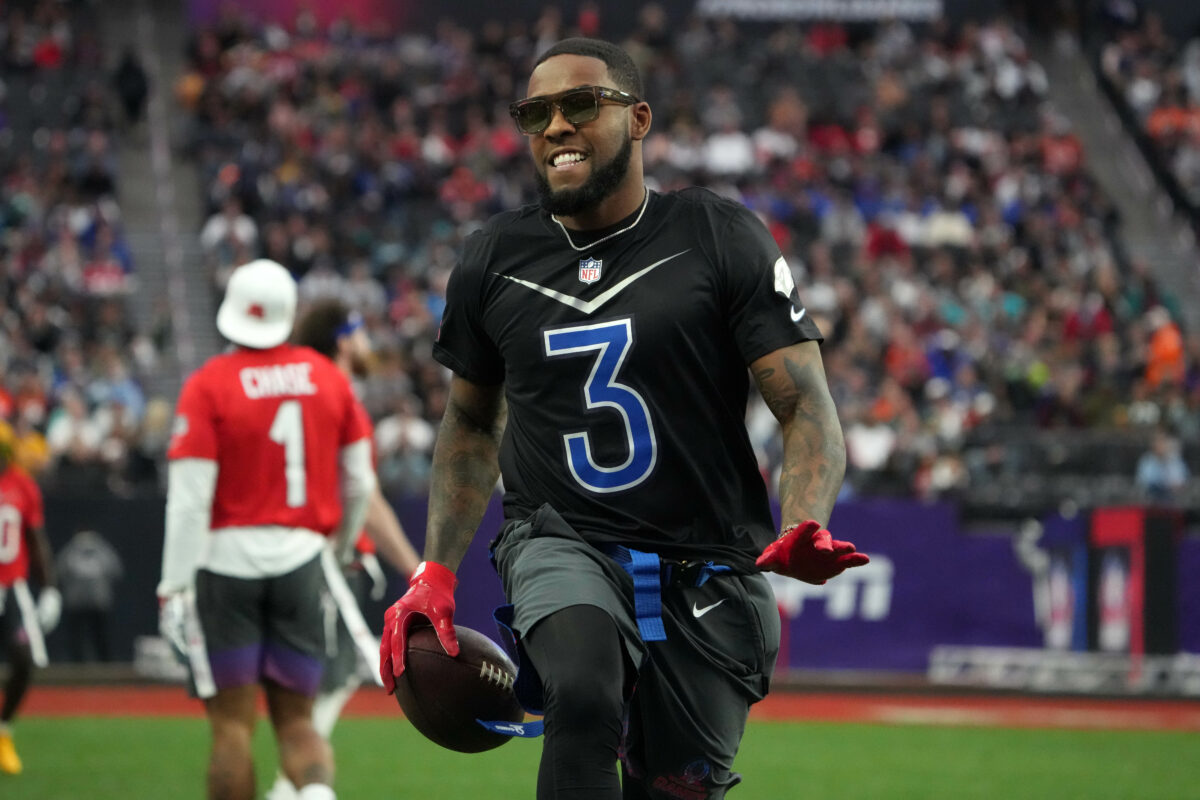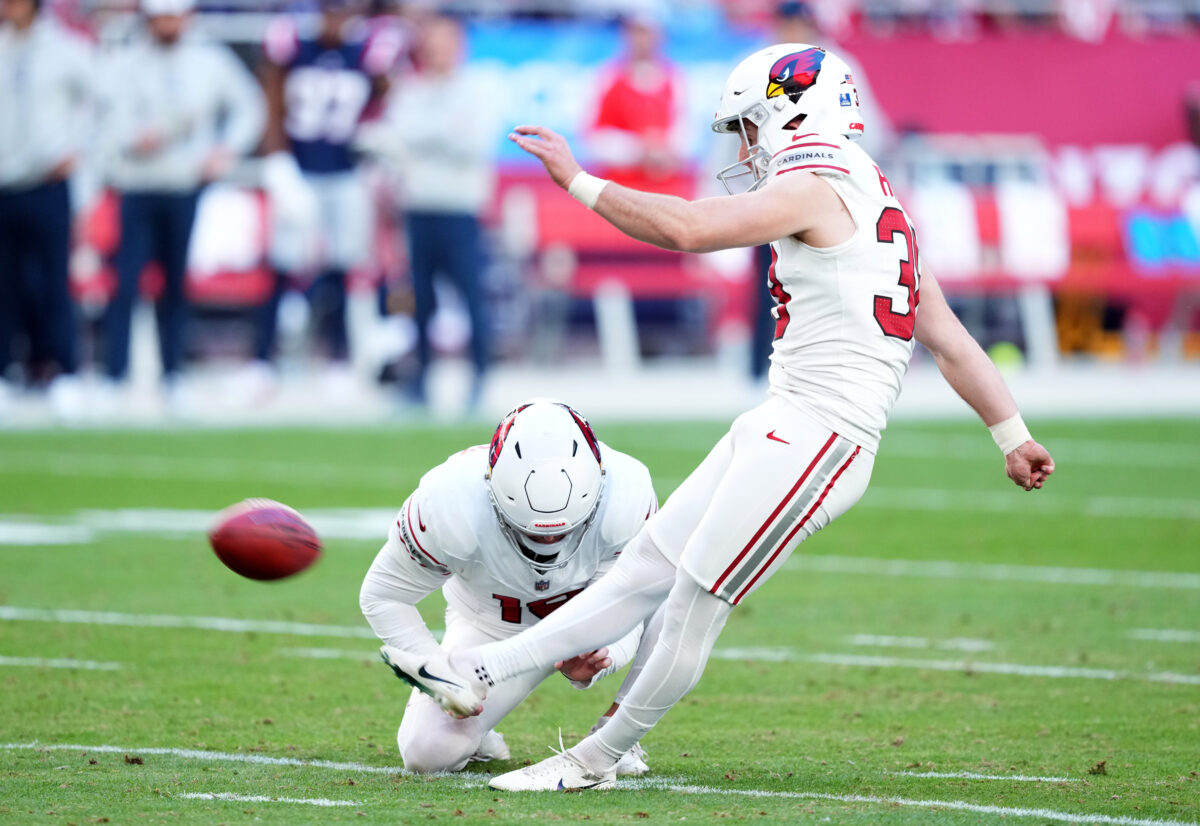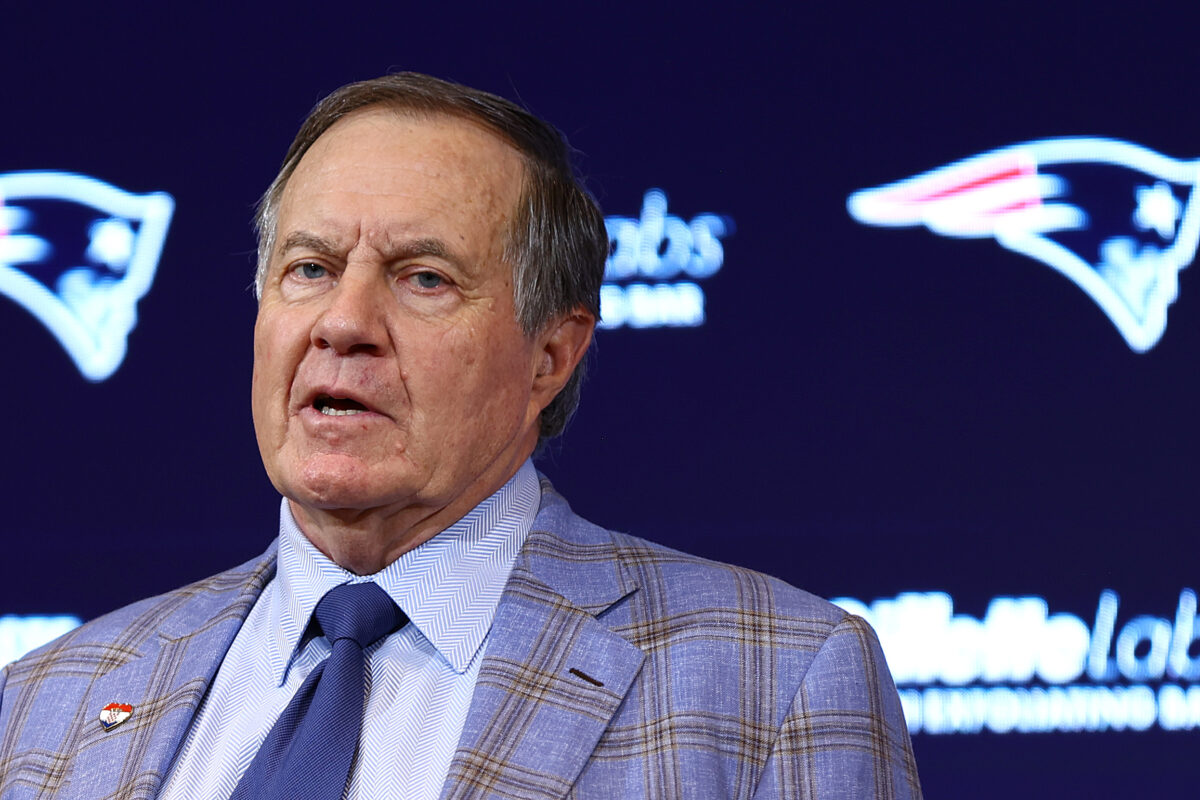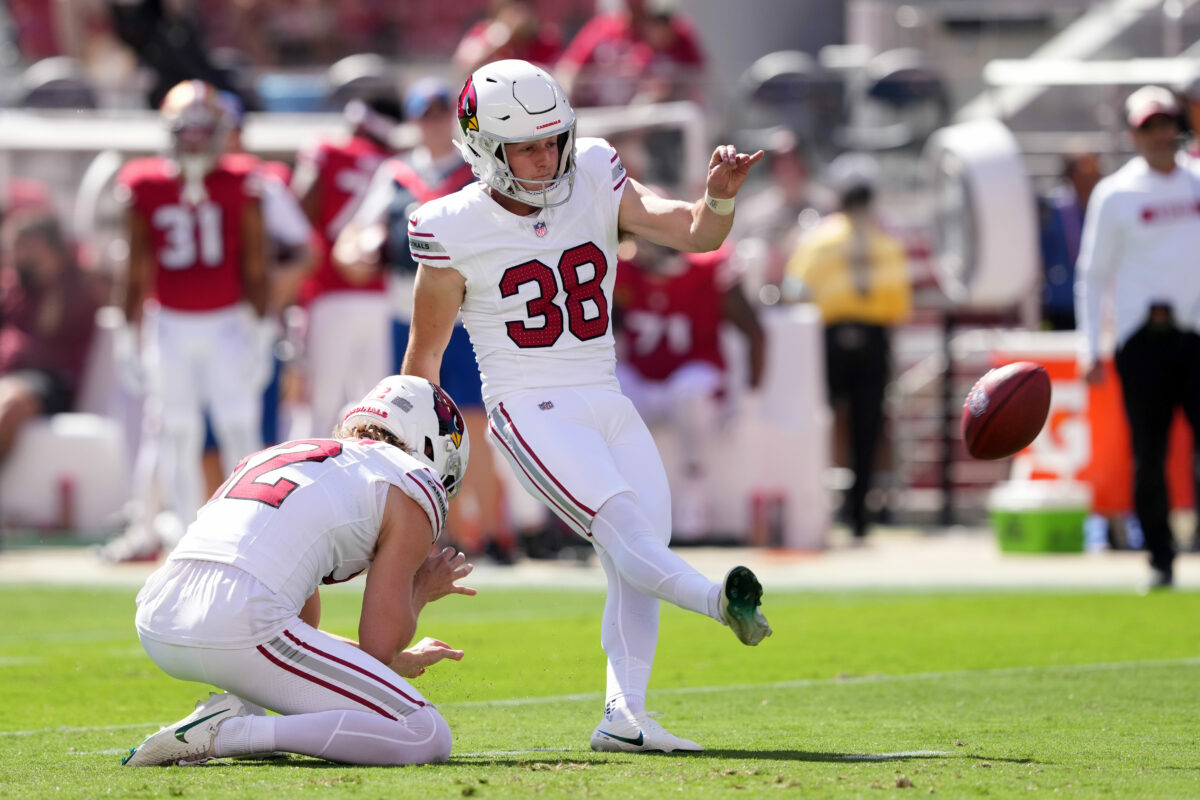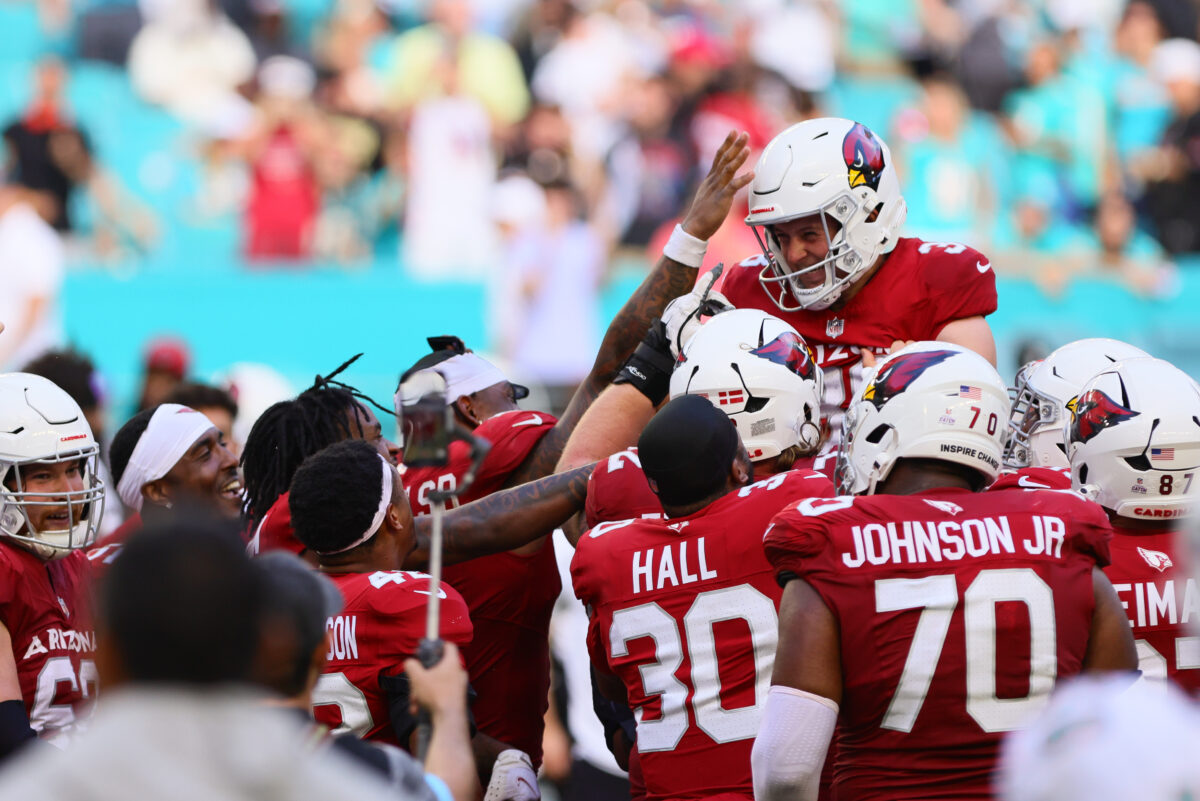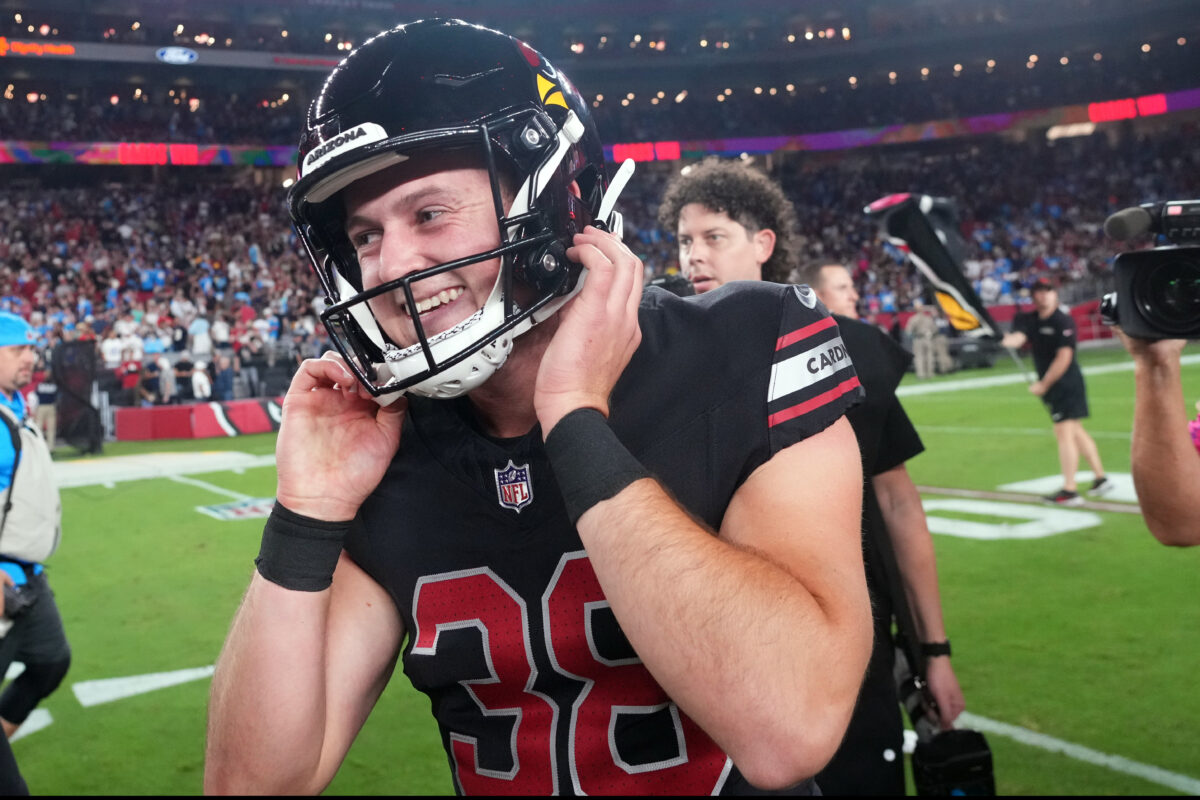While much of the focus on Arizona Cardinals kicker Chad Ryland has been with his three late-game winning field goals, a case could be made that a nearly just as important kick was the 57-yarder that cut the Miami lead to 13-10 on the first possession of the second half last Sunday.
The first play of the quarter was a 37-yard pass play to tight end Trey McBride that moved the ball to the Miami 33-yard line. However, a 10-yard loss by running back James Conner and a holding penalty on left tackle Paris Johnson Jr. pushed the Cardinals back to their own 47 facing second-and-30.
What followed were two conservative plays of nine yards on a pass to Conner and a 6-yarder to McBride, setting the stage for the longest attempt of Ryland’s career. He did make 51- and 56-yard kicks last season with the Patriots, but his previous long attempt with the Cardinals was a 45-yarder blocked and returned for a touchdown by the 49ers.
Head coach Jonathan Gannon had confidence Ryland could connect from that distance.
“I know he can hit the long ones (from) what he does in practice,” said Gannon, who then expounded on the two previous plays.
He said, “I thought two plays that’ll go overlooked: second-and-forever, get it third-and-forever, then get it back to kind of the line that we felt good about at that point in time with where the wind was. It was kind of right there and we sent them out there and he booted it through.
“Those were a huge three points right there. I dislike going backwards, but to get a productive play on second down and a productive play on third down to where you don’t have to punt there, that was huge.”
Special teams coordinator Jeff Rodgers said, “You want to see practice translate to games. You guys aren’t out there when we’re kicking field goals, but leg strength is a non-issue with him. To be able to see it translate in a game is good. I’ve said it before, I’m thinking about the kicker, the holder, the snapper, the protection, all of those things that go into that one single play and there are a lot of moving parts. But at the end of the day, once it gets to him, he’s got to put it through.”
And that’s what Ryland has done in his four games with the Cardinals. It earned him honors as the NFL’s Special Teams Player of the Month and has Rodgers being asked about what will happen when Matt Prater is healthy.
“You’re like one week into an injured reserve situation,” Rodgers said, “so, yeah, I mean it’s probably a little soon to be having those kinds of conversations. I promise you the only thing I’m thinking about right now is Chicago.”
However, it’s two weeks into Prater’s IR stay and the reality is this is the last year of his contract. Next August, Prater turns 41. Rodgers probably doesn’t want to think about it, not only because of Prater’s long-term success, but that they go back to time together in Denver.
It’s also notable that usually when teams add players from the practice squad to the roster, they sign a contract for only the current season. However, Ryland signed a contract that includes 2025 for the minimum $1.03 million. It’s not guaranteed, but there’s a reason the Cardinals did that even though it is a discussion for another day.
When Rodgers was asked if he thought Ryland would be this consistent, he said, “The expectation for anybody that you sign on a roster is they’re gonna be successful in whatever role that you want to give them. The unique thing about a specialist is there’s usually only one on the roster. A wide receiver you can kind of develop a guy. Maybe he plays, maybe he doesn’t. But if you’re the kicker, you’re kicking. So the expectation is you will have success. But he’s been good since he’s been here and I hope that it stays going.”
Meanwhile, Ryland and Prater have each made their one 50-plus-yard field-goal attempt in a season where kickers are hitting at a record pace.
After two weeks, there was an unheard-of 35-for-39 made from long distance (89.7 percent). It’s fallen off since then with 66.7 percent (48-for-87) in the last six weeks, but it’s still an impressive season total of 93-for-126 (73.8 percent).
Rodgers said, “So, you got to kind of let these things play out over the course of the season as weather changes. And so I just think that when guys have success and can do things in practice, demonstrate that you can do it, you get an opportunity in a game, you make one of those, you have success, you’re going to get more opportunities and the guys who haven’t had as much success aren’t getting those opportunities.”
But why is it that there’s so much success?
Rodgers said, “The whole unit is better than it was 20 years ago. The snappers are better; they’re specialized. More punters are holding than quarterbacks, so those guys spend hours upon hours with each other. It just continues to get refined. And you know a guy that was considered the best kicker in football 30 years ago who’s 80 percent; that isn’t going to put you in the top 10 usually at the end of the year. So, it’s not surprising guys are just better, but the operation stuff is better than it used to be.”
Rodgers also believes there’s another factor that isn’t talked about a lot.
He said, “The field-goal block is different. When I first got in the league, you had a 300-pound nose guard, two guys next to him on either side and three guys pushing those three guys on the back of the snapper in between two A-gaps. You’re talking about six guys crashing in there and that’s hard to defend. For good reason, player safety, that has been ruled out, but some of those things like the penetration inside to contest field goals isn’t quite as violent as what it used to be.”
Get more Cardinals and NFL coverage from Cards Wire’s Jess Root and others by listening to the latest on the Rise Up, See Red podcast. Subscribe on Spotify, YouTube or Apple podcasts.
[lawrence-auto-related count=3 category=2613]

